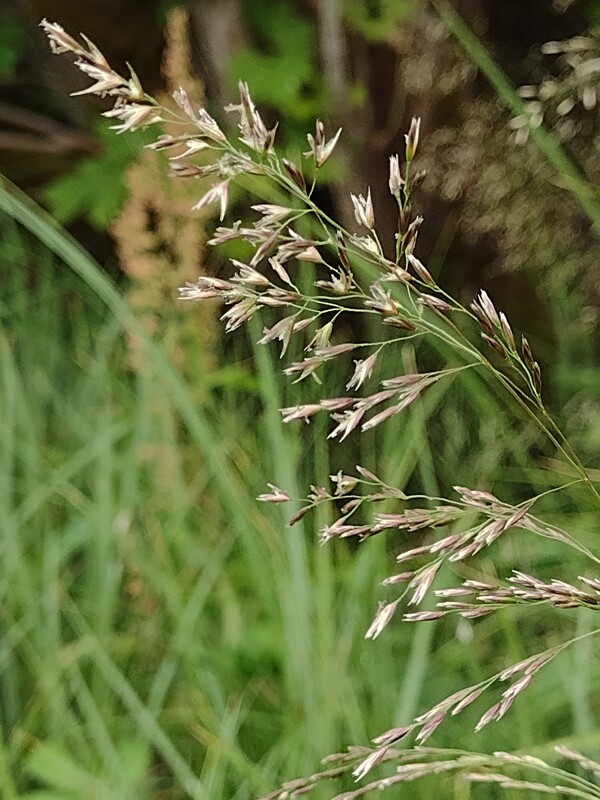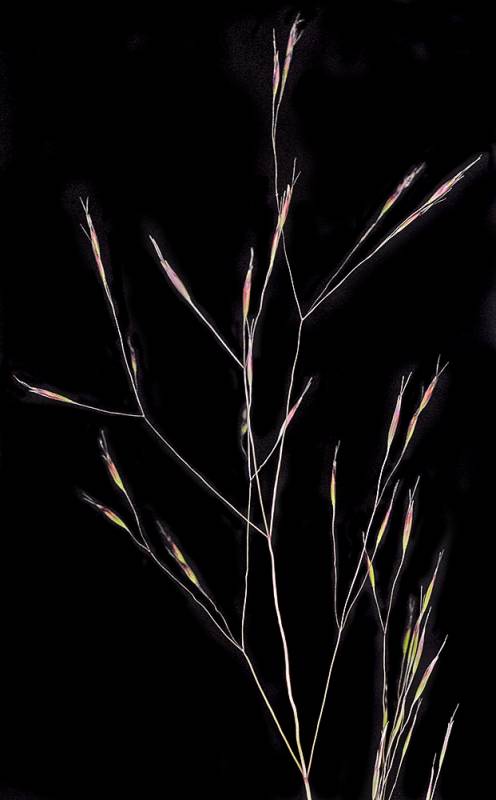Deschampsia cespitosa
Deschampsia danthonioides
tufted hairgrass
annual hair grass
Sheaths open, glabrous to scabrous;
ligules acute or obtuse, at least 4 mm. long, often split, pubescent;
blades stiff, usually involute, 1.5-3 mm. broad, scabrous on the lower side, with a few raised veins.
Inflorescence a panicle 8-25 cm. long, from open and drooping to narrow and erect;
spikelets glistening, purplish to tawny, usually 2-flowered, but often with 3 flowers;
glumes narrow, the first 1-nerved, 2.5-5 mm. long, the second 3-nerved, 3-6 mm. long;
lemmas 2.5-4 mm. long, 5-nerved, the tip 4-toothed; awn attached near the base of the lemma, 2.5-4 mm. long;
paleas shorter than the lemmas;
rachilla prolonged beyond the uppermost flower.
Deschampsia cespitosa
Deschampsia danthonioides
- Local floras:
BC,
CA,
OR,
WA
- Local Web sites:
CalFlora,
CalPhotos,
Flora NW,
PNW Herbaria
WildflowerSearch
iNaturalist (observations)
USDA Plants Database
- LBJ Wildflower Center
- SEINet
- Plants of the World Online
- Encyclopedia of Life
- Wikipedia
- Google Image Search
- Local floras:
BC,
CA,
OR,
WA
- Local Web sites:
CalFlora,
CalPhotos,
Flora NW,
PNW Herbaria
WildflowerSearch
iNaturalist (observations)
USDA Plants Database
- LBJ Wildflower Center
- SEINet
- Plants of the World Online
- Encyclopedia of Life
- Wikipedia
- Google Image Search



